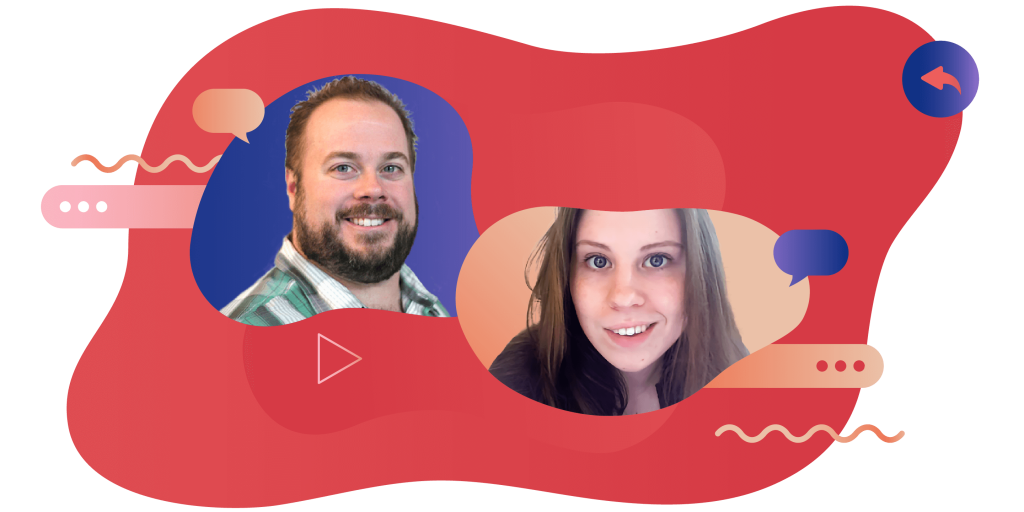Support is often seen as an entry level role to technology.
This notion sets up a unique ability to introduce eager and engaged people from a variety of backgrounds to frameworks that help build out their future career.
Desiree Gregory, Director of Global Support at DroneDeploy, shares that this is the reason she loves working in support.
She is excited to help bring people into tech and views support as the door to do it.
Desiree, Why is bringing new people starting in Support so exciting?
Desiree: Support has a special place in my heart. I get jazzed because I can hire entry level folks, people who are in an early stage in their career, or people who are pivoting in their career. For example, someone who is looking to break into the tech industry after having gone to code school.
We talk a lot in tech about diversity, equity, inclusion and hear there is a pipeline problem, or not enough candidates from underrepresented groups, and support has a real opportunity to make an impact on that.
We can expand an organization’s diversity by bringing people into tech via support and helping them develop the skills needed to grow into other roles within the company. I’ve made it my personal mission to help solve the so-called pipeline problem in tech.
When people come into support, there aren’t many who want to do it for 20 years, like you and me, and that’s ok! If you have aspirations beyond support, it’s part of my job to help you with that direction, and explore how you get there. That is why I get excited! So much opportunity.
Craig: That is incredibly inspiring! I love when people want to stay in support, but I agree that helping employees expand and develop their careers is both rewarding and a necessary part of retaining great talent.
What is your approach?
Desiree: In my view, if people feel like they are continuing to grow and explore possibilities with their manager, it quiets the portion of their brain that is always asking: “What’s next? What’s next? What’s next?”
And by satisfying that voice through coaching and support from their manager, it allows people to focus on doing their best work. They do their best work because they know their leader is supporting them. I want people to know that it is ok to want change, and still do their current job.
I coach a lot of people on their career. Some of them have an idea of the job title they want next, but when we dig in, we realize they don’t entirely know what that role is about. I encourage them to explore beyond job title to understand whether it is a fit for them.
So I ask, what parts of your job today do you enjoy the most? What’s important to you? Money? Flexible working environment? A cool title? I listen and share my perspective. For example: “What you are describing to me actually sounds a lot like Product Management. Maybe you should schedule some time with a person in that department?”
I send them on these explorations. Sometimes it sparks excitement and curiosity, and sometimes people realize they wouldn’t actually like the job they had in mind. Even ruling something out is incredibly valuable.
I try to meet people where they are. For example, some people prefer having a very structured set of steps or milestones. Our team has a career matrix for people who prefer that level of detail. It is broken down by core competency and within each section it describes the level at which they need to execute on that competency for each job title. So for example, “Communication.”
How effective do your communication skills need to be as a Level 1 Support person? “Good” What about Level 2? “Excellent”, and so on. It gets into a lot more detail, but that’s the basic structure. We have these for every department in the company.
I have been fortunate that Dronedeploy’s People Ops team and culture has been really tuned into and so this was already in place when I joined. We want everyone in the company to know what it takes to reach any job title they’re interested in.
But it isn’t about “Let’s get you in the next job title within a year.” Most people don’t know what they want, they just want to see growth and constantly improve. So it is often more of an exploratory conversation.
For situations where maybe the person’s path is less clear, I use an exercise like a personal inventory, where they write down what they want to do more of (and less of!), what they enjoy about their job, what habits they have today that help support that goal, and what habits they have that might be undermining that goal.
And then that helps form an action plan, or at least guides further discussion. This actually came from a former member of my team who created it for herself and I asked if I could reuse it! Thank you Danielle!
How often do you have these types of conversations?
Desiree: Having career conversations regularly is important to help keep “What’s next?” at bay. I am lucky that I have a smaller team so I am able to do a one-to-one meetings every week. The start of each meeting is always regular 1:1 stuff, projects or concerns, but at the halfway mark we switch to a theme.
I use rotating themes for our 1:1s throughout each week of the month:
- 1st week is ‘Career’: We check in on their career aspirations, professional development goals and that sort of thing. I might ask,”Have you met with anyone to help you develop x or y skill”? or if they are still ramping up, we stick to “What do you need to become the best support person you can be?” We start looking at the future, even if it is years away.
- 2nd week is ‘OKRs’: We review their progress against goals and OKRs for the quarter to ensure we are on track and they have what they need to be successful.
- 3rd week is ‘Feedback’: This is a dedicated time to share two-way feedback. We talk about what’s going well and opportunities for improvement. I focus on a different topic each time in my feedback for them. I also consciously make space for them to provide feedback to me on anything they want.
- 4th week is ‘Kaizen’: Kaizen is a Japanese term that translates to “continuous improvement”. The concept is old, but was re-popularized by the Japanese automaker, Toyota, in the 1980s. The core message of Kaizen is all about incremental change. We don’t need to make big sweeping changes! Small, continuous refinements over time can make a huge impact on operational efficiency and effectiveness. This concept is something I carried over from an old leader of mine. I ask each person for their ideas or to share one little thing they have noticed that causes friction or unnecessary toil. It can be at the team or company level. I work to incorporate as many of those ideas as I can, either through delegation, escalation to executive leadership, or however it needs to happen. We’ve uncovered some real gems and made some great improvements as a result.
Do you need to look for a certain type of candidate to achieve these goals and achieve a strong, diverse team?
Desiree: Our hiring structure is fairly straightforward. We do short screenings with recruiting and leadership and then a written exercise, followed by meetings with members of the support team and CSM teams, and finally one interview with the leader to deep dive into work style and situational questions.
I try to stay cognizant that in my earlier days, my own tendency was sometimes to hire people who remind me of myself. That is something I need to pay close attention to so I don’t create a team of Desiree clones. Instead, I want to hire for different perspectives and strengths.
What they should have in common are values, openness, and a willingness to learn. I’m looking for a growth mindset; a concept that transcends demographics. But I need to fight my own biases: Do I like the candidate because they responded the way I would answer or because their approach or perspective is good for the team?
I like to think about culture add, not a culture fit. What do they bring to the team that is different and new, but also with that foundation of openness, curiosity, and growth mindset that will work well with the existing team? That is such an important part of it. People with these qualities tend to promote harmony and collaboration. That’s what I try to cultivate.
Often I see that the key to achieving this is unlocking that potential. How do you unlock this in others?
Desiree: I try to create an environment where people can do their best work. You need to foster a culture where people feel safe enough to take risks and are comfortable enough with their peers and the leader to express an opinion, or make a mistake, or disagree.
If everyone is afraid, then we end up in situations where everyone thinks a new process won’t work, but they don’t speak up. They just don’t do the new thing. We need to trust each other and make choices that help us evolve to meet the new challenges in front of us.
I practice psychological safety and encourage others on the team to do the same. When something goes wrong, I approach with curiosity instead of anger or a reprimand. I make it clear the goal is not about placing blame.
It’s about how we fix whatever is wrong and then afterward, reflecting on what could have happened differently to prevent the situation or help us be more prepared. That’s how we achieve excellence; by learning from our “mistakes” and choosing to see them as opportunities for growth and evolution.












